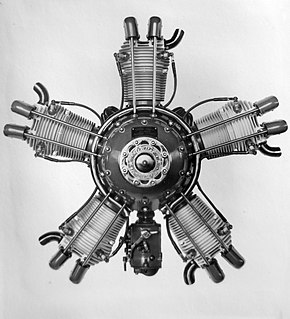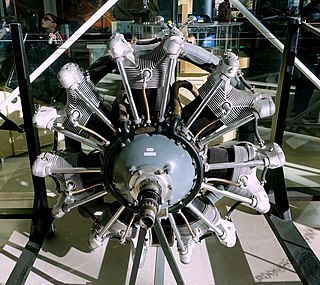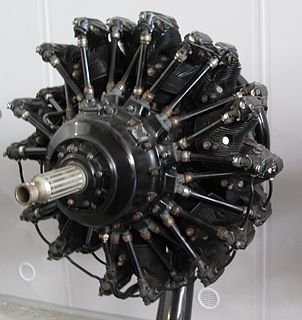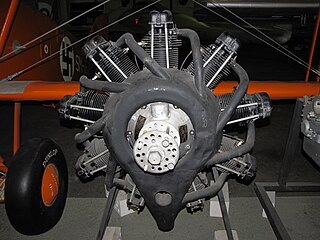
The Nakajima Homare was an air-cooled twin-row 18 cylinder radial Japanese aircraft engine manufactured during World War II. Producing almost 2,000 horsepower, it was used widely by both the Imperial Japanese Army and the Imperial Japanese Navy. Given the Navy service designation NK9, the "Homare" was also given the company designation NBA, Army experimental designation Ha-45 (ハ45) or, Army long designation Nakajima Army Type 4 1,900 hp Air-Cooled Radial and, (coincidentally) unified designation code of Ha-45.

The Delta was a 12-cylinder inverted-V aircraft engine built by Isotta Fraschini prior to and during World War II.
The Nakajima Ha1 Kotobuki was an aero-engine developed by Nakajima. It was a radial piston developed under licence from the Bristol Jupiter.

The Walter NZ 60 was a five-cylinder, air-cooled, radial engine for aircraft use built in Czechoslovakia by Walter Aircraft Engines in the 1920s.

The Walter Venus was a seven-cylinder, air-cooled, radial engine for aircraft use, built in Czechoslovakia in the late 1920s.

The Walter Vega was a five-cylinder, air-cooled, radial engine for aircraft use, built in Czechoslovakia in the late 1920s.

The Armstrong Siddeley Ounce was a small two-cylinder aero engine developed by Armstrong Siddeley in 1920. The engine was originally conceived as a test piece but ran very well and was put into production for early ultralight aircraft and use in target drones. The Ounce used two cylinders from the preceding Jaguar I radial engine.

The Jacobs R-915 or Jacobs L-6 is a seven-cylinder, air-cooled, radial engine for aircraft manufactured in the United States, production started in 1936.
The Jacobs R-830 or L-5 is a seven-cylinder, air-cooled, radial engine for aircraft manufactured in the United States, production started in 1935.

From 1905 to 1915, Alessandro Anzani built a number of three-cylinder fan and radial engines, one of which powered Louis Blériot's 1909 cross-channel flight. An Anzani three-cylinder engine that powers a Blériot XI based in England is thought to be the oldest airworthy engine in the world.

The Walter Scolar was a Czechoslovakian nine-cylinder, air-cooled radial engine for powering light aircraft that first ran in 1936. With a displacement of 8 litres, it produced 132 kW at 2,500 rpm.

The Walter Polaris was a Czechoslovakian three-cylinder, air-cooled radial engine for powering light aircraft that was developed in the 1930s.

The Walter Bora was a Czechoslovakian nine-cylinder, air-cooled radial engine for powering light aircraft that was developed in the 1930s by Walter Aircraft Engines.

The Walter Mars was a Czechoslovakian 14-cylinder, air-cooled radial engine for powering aircraft, a licensed built Gnome-Rhône 14M.

The Walter Castor was a Czechoslovakian seven-cylinder, air-cooled radial engine for powering aircraft that was developed in the late 1920s. The Super Castor was a nine-cylinder development. Castor I production began in 1928, Castor II in 1932 and the Castor III in 1934.

The Walter Gemma was a Czechoslovakian nine-cylinder, air-cooled, radial aero engine that was developed and manufactured in the early 1930s by Walter Aircraft Engines.

The Walter NZ 120 was a nine-cylinder, air-cooled, radial engine for aircraft use built in Czechoslovakia by Walter Aircraft Engines in the 1920s. Using common cylinders and parts from the NZ (Novák-Zeithammer) range of engines the NZ 120 produced up to 135 horsepower (99 kW).

The Walter Atlas was a nine-cylinder, air-cooled, radial engine for aircraft use built in Czechoslovakia in the early 1930s.

The Walter NZ 85 was a seven-cylinder, air-cooled, radial engine for aircraft use built in Czechoslovakia by Walter Aircraft Engines in the late-1920s.

The Walter Minor 12 was a 12-cylinder, air-cooled, V engine for aircraft use built in Czechoslovakia by Walter Aircraft Engines in the late-1930s.


















